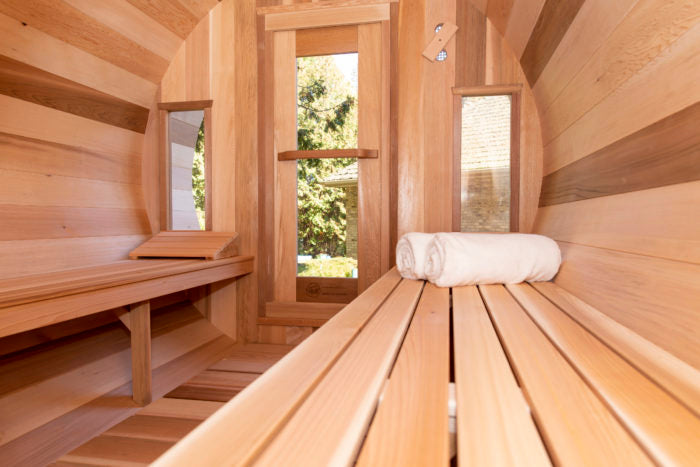The Best Guide To Traditional Sauna
The Best Guide To Traditional Sauna
Blog Article
Traditional Sauna for Beginners
Table of ContentsThe Greatest Guide To Traditional SaunaThe Definitive Guide for Traditional SaunaTraditional Sauna Can Be Fun For EveryoneTraditional Sauna Can Be Fun For AnyoneTraditional Sauna Things To Know Before You Get This
Many of the weight lost in a sauna is water loss and is re-gained upon rehydrating. However, certainly sauna can be a vital part of a healthy weight management program. To check out the differences between typical and IR saunas, I will divide these right into proven, theoretical, and made distinctions.Therefore, the hottest factor in the saunawhich is at the ceiling directly above the sauna heateris commonly between 185 and 190 F. Claims that a standard sauna surpasses 200 F is just not true and not appropriate for electrical saunas offered in the US. The temperature level for a far-infrared sauna is usually established in between 120 and 140 F; nevertheless, unlike the conventional sauna, the goal in and IR area is not to accomplish a high temperature.
As a result of this, the temperature distinction is nearly pointless, since excessive sweating results in both sauna types, yet the technique of warming the body is various. In an IR sauna the bather will feel warm and will sweat a lot, but at much reduced temperature levels (Traditional Sauna). Therefore, if the objective is to invest longer durations of time in the sauna, the IR sauna is a great selection
When a conventional sauna has been correctly warmed, the sauna wall surfaces are warm, the air temperature level has actually accomplished set temperature level and the rocks are very heated. As an intriguing side note, the heated wall surfaces and the rocks are releasing far-infrared heat, combined with the heated air, to develop an "enveloping heat".
The 9-Minute Rule for Traditional Sauna

When the high temperature level is accomplished, the elements cycle on and off to keep the high temperature. A lot of standard sauna users delight in pouring water over the rocks to produce steam to elevate sauna moisture levels. The benefits of pouring water over the rocks include: making the room much more comfortable, dampening the nasal passages, and allowing the usage of aromatherapy by blending crucial oils with the water.

When the energy enters the body, it triggers the body temperature to my sources increase and ultimately results in sweat. In an infrared sauna it is essential for the emitters/heaters to remain on nearly continuously. Given that there is no mass of rocks to maintain warmth, the sauna will cool down if the emitters shut down.
As discussed over, the sauna bather in an infrared room wishes to place himself in front of running emitters to obtain maximum benefit from the heat. The heating time for the two areas can be really different, relying on how the spaces are made use of. For a conventional sauna, a bather should enable 30-40 mins for the space to achieve a preferred temperature and to properly pre-heat the rocks.
The Definitive Guide for Traditional Sauna
A well constructed sauna more information will typically accomplish a temperature of 150-160 F in about 30-40 mins. For hotter temperature levels, the area might require to heat for a longer period.

Standard saunas have a tendency to be larger (thus make use of even more power) than infrared saunas, although conventional saunas are absolutely offered in one and two individual sizes. For a two-person standard sauna, 5x6 or 5x7 size is most prominent. The leading bench can easily seat two or 3 individuals and is additionally enough time to exist down during the sauna session.
4 Easy Facts About Traditional Sauna Described
The ordinary expense per kWH of power in the U.S. is around $0.11, so a 4.5 kW heating system will set you back roughly $.50 to compete one hour, if the you can try this out heating system runs constantly for one hour. Usually a sauna heating system will certainly compete 75% of the first hour and 50% of succeeding hours on given that the elements cycle once the set temperature is attained.

Finally, there is a rarely gone over difference in the social experience between both areas. While our culture has shed a few of the social benefit of the typical sauna experience, it can be extremely socially satisfying (Traditional Sauna). From household time in the sauna, to heart-felt conversations with loved ones, to sauna partiesthe typical sauna experience can lead to intimate mingling
The Ultimate Guide To Traditional Sauna
Most higher end infrared rooms consist of colored light treatment, noise systems and full-glass fronts.
Report this page